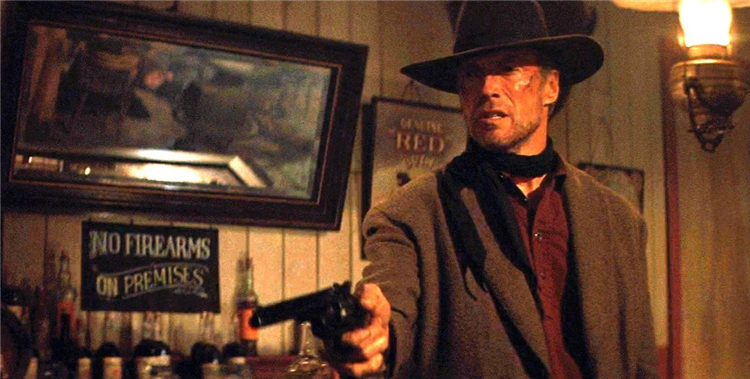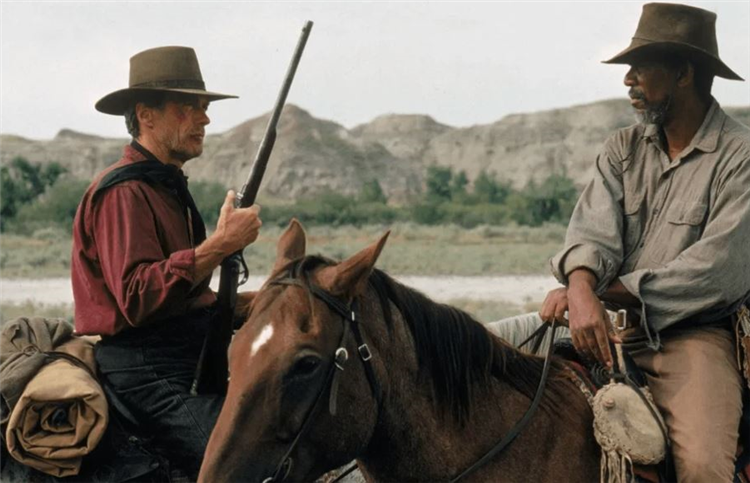The director was surprised by Unforgiven’s huge success, especially since he made the film without expecting much from the audience.
Clint Eastwood is a true legend in the world of cinema, not just for his acting, but also for his directing. Out of all his amazing films, Unforgiven still stands as a fan favorite. And since it’s a Wild West movie, one might think it could be one of the priciest films ever made.
Interestingly, Unforgiven was made in a time when technology wasn’t as advanced as it is today. Valuing older productions can be tricky for this very reason — not everyone appreciates a classic or recognizes it as a great piece of work. But the movie proves that wrong. It shows that movie history can be made with minimal investment, a tight schedule, and just some thoughtful planning.
How Unforgiven Became A Big Win For Clint Eastwood?
Over his nearly seventy-year career, Clint Eastwood has delved into a variety of genres, both as an actor and a director. However, his name will probably always be synonymous with the Wild West.
Although he is widely celebrated for The Outlaw Josey Wales, the real standout is Unforgiven. The film earned him four Oscars in 1994, including Best Picture and Best Director. Plus, it boasts a Rotten Tomatoes score of over 95%.

But why does it deserve such recognition? It was made with minimal investment and filmed in just thirty-nine days — something that might seem unbelievable to many. To top it off, the story almost never saw the light of day. Initially, the script, written by David Webb Peoples, caught the attention of Francis Ford Coppola, but ultimately didn’t move forward.
The project nearly slipped through Eastwood’s fingers when his long-time associate, Sonia Chernus, advised him against it, calling the script a “piece of inferior work”. Though he initially heeded her advice, Eastwood eventually decided to give the material a shot and became eager to bring it to life.
With a budget of just $14 million, the movie became a huge success, despite debuting during a period when the Western genre was losing its appeal, with fading public interest and lower box office returns. Eastwood mentioned that this more economical approach to filmmaking was heavily inspired by Don Siegel, the director of the 1971 neo-noir Dirty Harry:
Don was a guy who could get a lot on film with very little in the way of budget, and by watching him I tried to grab that. I don’t shoot quite as lean as Don, but I do plan things out.
At an AFI event, the director also mentioned that this influence was likely why he didn’t even want to mess with the script as well. Siegel used to say that people often take a project and rewrite it in an attempt to improve what’s already great, only to end up making the story worse and driving up costs.
Unforgiven Took Years To Make

Anyone who thinks that Eastwood’s careful planning made the movie easy to execute is mistaken. Despite the fast shooting schedule, it took a long time to bring Unforgiven to life.
Once he became interested in the script, he knew he wanted to both direct the film and play the lead role. To ensure he was the right age for the character, he decided to postpone Unforgiven until the timing was perfect. To give an idea, the project left Coppola’s hands in 1985, but didn’t make it to the big screen until 1991.
However, there was another factor as well. According to NJ.com, Eastwood was also eager to explore new directions beyond the Old West in the early 1980s. He wanted a change of pace, having already worked on several Westerns, and felt it was time to tackle different projects first.
According to Cinephilia & Beyond, in the end, Eastwood was taken aback by the film’s reception:
I was shocked, because I never try and romance the audience. You’ve got to forget that there’s somebody out there eating popcorn and Milk Duds. I figured that if people want to see it, they’ll see it. If they don’t, screw it.
The filming took place on a remote ranch in Canada, where the director personally selected a production designer to construct the town of Big Whiskey from the ground up. To maintain the period feel, motorized vehicles were banned from the set, and transportation for the cast and crew relied on horses.
The film grossed nearly $160 million worldwide.
